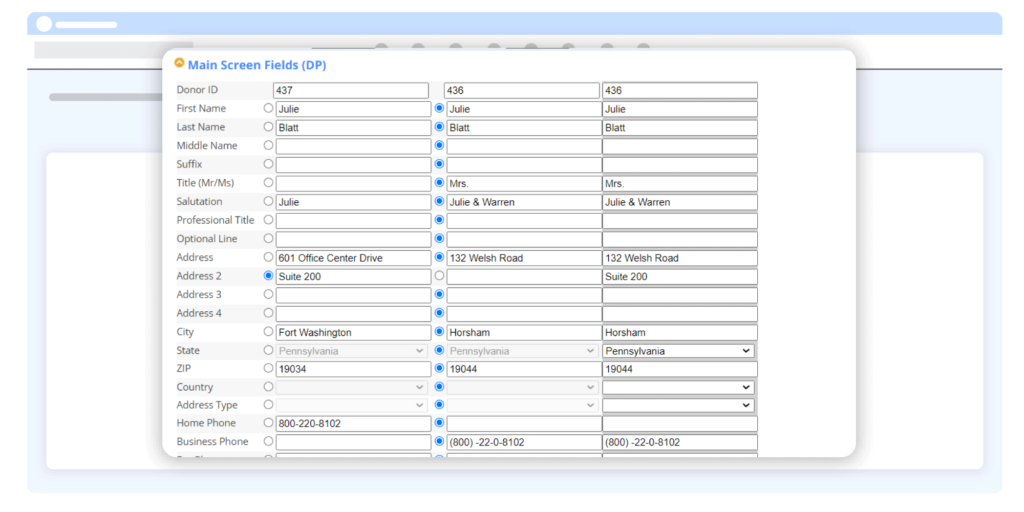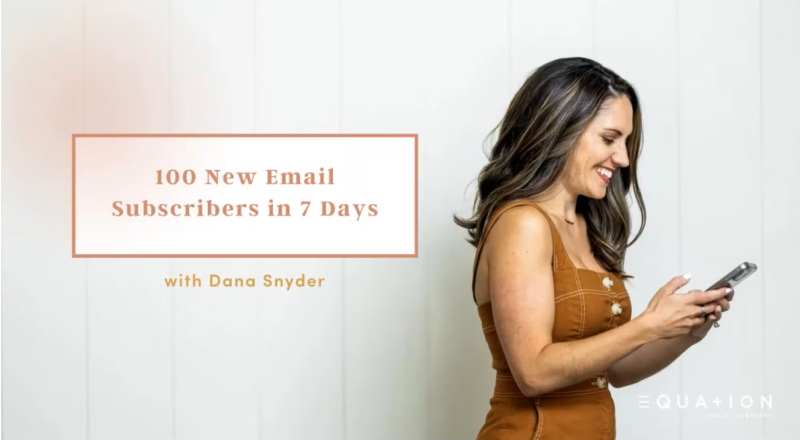Navigating the year-end giving surge is a thrilling challenge, not only for fundraising professionals, but also donors choosing how to make their tax-deductible contributions. DonorPerfect clients report seeing 4.7% of the entire year’s contributions flow in between December 29 and 31, so it makes sense to share your year-end appeals up until the very last minute.
Whether your organization gets an early start, or waits well into December, a few things are certain to make your email marketing, data integrity, donor engagement, and content creation efforts much easier. Take advantage of these quick year-end tips from the fundraising experts at DonorPerfect.
5 Year-End Email Tips to Improve Response Rates
In the December email deluge, standing out is key. The following email marketing best practices have been proven to help nonprofit organizations increase email engagement and improve response rates.
- Keep your subject lines short – ideally under 10 words. Research shows that almost half of recipients (47%) open their emails based on the subject line alone, and that inboxes typically cut off subject lines at 30-60 characters.
- Add contact details, such as preferred names and salutations. Using a system like DonorPerfect, you can also include your donors’ recent gift information, like date or amount. Personalize the email sender and/or signer, too, especially if someone in your organization is well-known in your community.
- Share compelling stories or updates that directly connect your supporters to the impact of their donations. Think outside the box – stories can come in the form of photos, quotes, videos, or a single sentence.
- Remind your supporters to donate in time for tax advantages and to improve your beneficiaries’ conditions. If you have a matching donation, inspire donors with the specific goal you’re trying to reach by sharing how close you are to attaining it.
- Give your supporters a path forward with a simple and obvious call to action (CTA) to capture their energy in the moment they’re inspired to give. In a short email, you’ll want to stick to one CTA to avoid confusion or distraction, so it’s best to link to your online donation form.
5 Year-End Reporting Tips to Maintain Data Integrity
As the year-end rush ensues, it’s important to maintain data integrity so you don’t start the new year with skewed data. If your organization doesn’t have standard data procedures in place, there are still a few quick things you can do to minimize entry errors, duplicate records, and embarrassing mistakes.
- Make sure everyone is using the same codes, know when to create new ones, and know when to check for existing ones – including volunteers if they are helping out. Create a key for them to reference while entering data; or:
- Edit your user settings so that only trained individuals are able to touch your data. DonorPerfect includes customizable user settings so you can keep certain individuals from entering or editing data.
- Keep a log of new data entries that you can review each day or week during your year-end campaign to minimize errors. For example, you can schedule the Daily Log Report in DonorPerfect to be delivered to your inbox automatically.
- Create a consistent naming convention for your codes to prevent errors. Follow a basic formula that will make sense to all users, ex. “YEAR_SOLICITATION OR EVENT NAME_DONOR SEGMENT” would end up reading like “23_YEAR END APPEAL_LYBUNT.”
- Create a “catch all” code for miscellaneous gifts so you can track and report on any that don’t fit with a specific appeal or fundraising effort. You never know when a donor will surprise you with a check or in-kind gift.
Ever mistakenly sent an appeal letter to a donor twice (because they’re recorded in your database twice)? DonorPerfect can generate a report of duplicate records and you can select which you’d like to combine. Learn how »

5 Year-End Communication Tips to Increase Donor Engagement
How many times have you wanted to share a fundraiser that you couldn’t actually donate to? Did you end up doing it anyway to raise awareness, or look for other ways to help? Donors are likely to spread the word when there are non-monetary ways to get involved.
Beyond financial contributions, your nonprofit community has tremendous potential to advance your mission in various ways. You can foster a sense of community by connecting like-minded individuals through their motivation to support your cause.
- Encourage them to follow you on social media and engage with your posts and photos, or – better yet – share them with friends and family. Share stories from your staff and beneficiaries about how your efforts have changed lives.
- Allow donors to create their own donation pages to inspire support from their networks with nonprofit crowdfunding tools. Donors who are unable to contribute financially can still make an impact by calling on others and spreading the word.
- Share QR codes in popular locations around town. Donors who aren’t active on social media or haven’t heard of your nonprofit will have the opportunity to get involved by simply scanning the code with their mobile device.
- Create a thread inviting your social media followers to share why they contributed to your campaign, or why they care about your cause. Compassion is contagious, and anyone reading the comments could decide to join the effort.
- Offer matching donations for a limited time to make it easy for supporters to help you reach your common goal.
5 Ways to Save Time Using AI for Year-End Appeals
According to HubSpot marketing experts, communicators can save up to three hours per content piece by enlisting Artificial Intelligence (AI) to generate it instead.
To use AI effectively, keep in mind that it doesn’t know your mission and your supporters like you do, so be specific in the instructions you give and careful in the edits you make. Provide enough context (timeframe, goal, sector, mission, audience, intent, etc.) for it to generate something that is unique to your organization’s year-end campaign.
- Create original campaign content by entering your specifications into your AI tool. For example, you might say, “Write a 50-word fundraising appeal encouraging donors to join the [Nonprofit Name] fight against breast cancer. Use words that inspire urgency to get involved before December 31st.” The more details you can provide, the better the response will be.
- Repurpose successful content from previous campaigns. For example, maybe you had a successful year-end appeal in the past that you want to repeat, but with a new or simplified donation process. Ask AI to regenerate the appeal with different instructions or for a different audience.
- Make sure your message resonates with your target donor group. Ask your AI tool how it would rewrite your message to appeal to a certain demographic, or ask it to do the writing for you. It can even translate the same message for different groups.
- Organize your content by date and time with help from AI. Ask your AI tool to suggest optimal send dates and times for your specific demographics and their preferred communication channels. If you’re having AI write these appeals for you, too, ask it to use language that inspires urgency.
- Ask AI to optimize your content for search engines and social media feeds, making sure it’s easy to find online. This is especially important at the end of the year when many nonprofits are trying to reach their supporters, so your message will stand out.
As you navigate the closing chapters of the year, embrace the challenge and leverage the tools at your disposal – like DonorPerfect’s free guides, the Year-End Fundraising Cheat Sheet and AI for Nonprofits, both available for download below.







